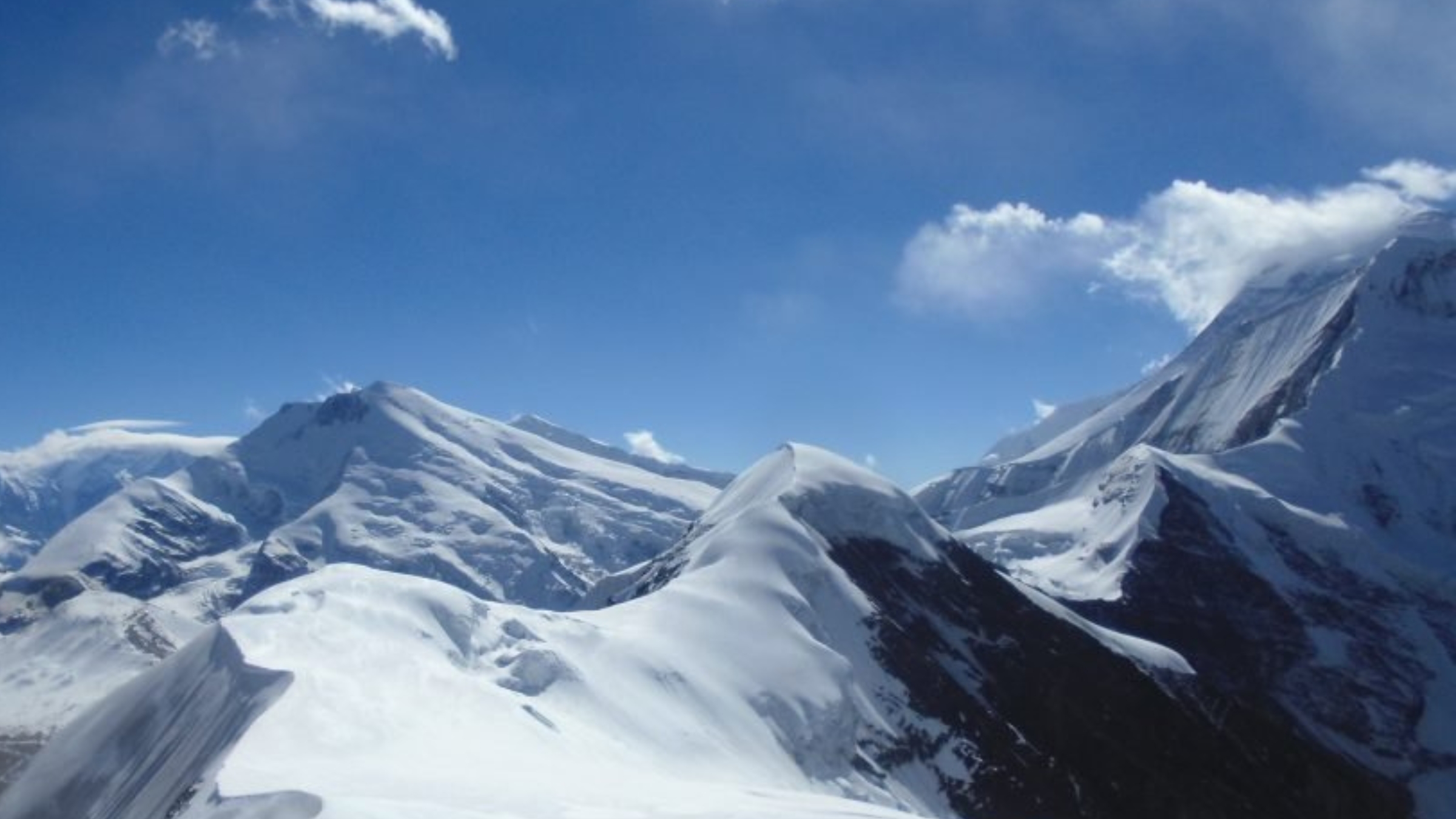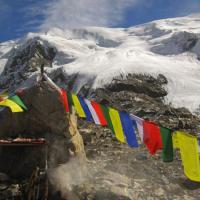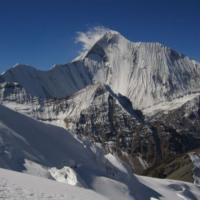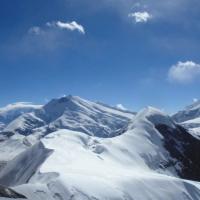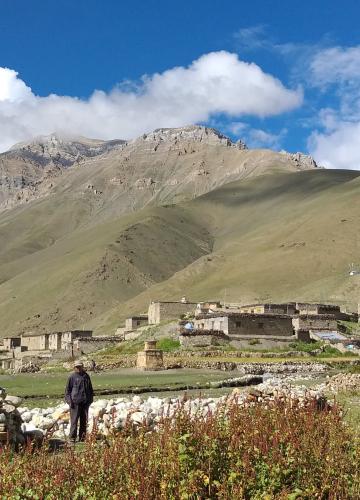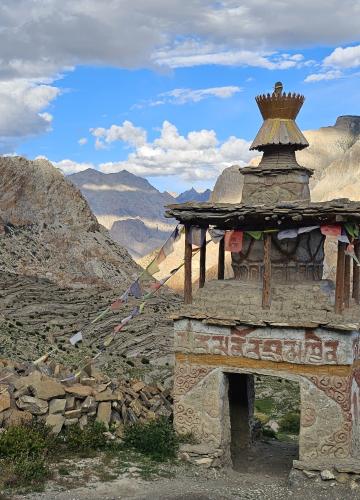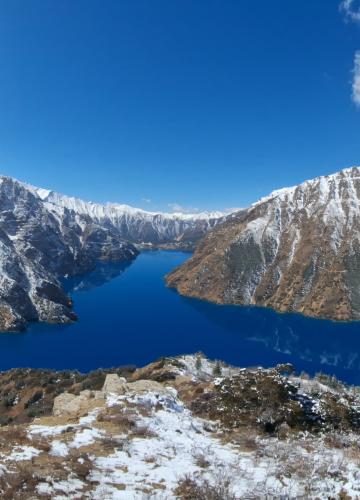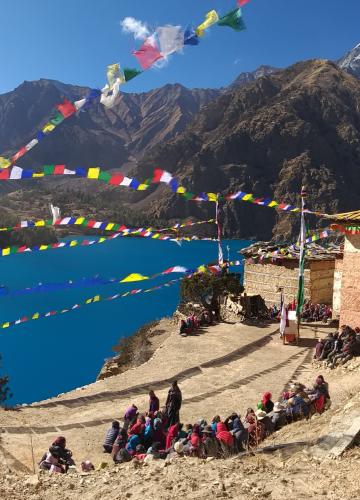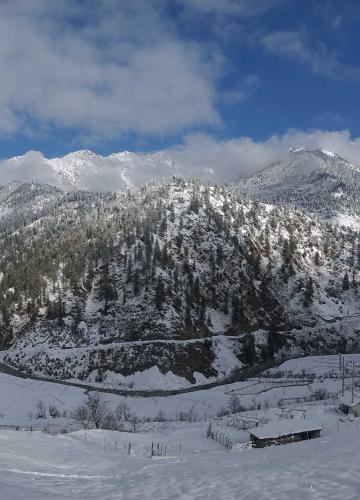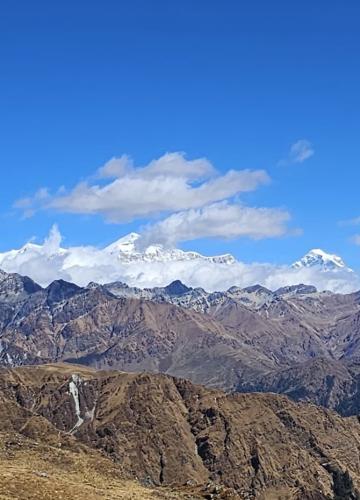Region: Dolpo, Mid-Western Nepal
Elevation: 6,087 meters (19,973 feet)
Best Season: Spring (April-May) and Autumn (September-November)
Duration: 18-24 Days
Difficulty Level: Moderate to Challenging
In Nepal there are numerour peak among of them Mukot peak offers you extra bestowed in the North western part of Nepal in Dolpo. Mukot peak is least popular but worth to explore and experience it, it is also known as Mukot Himal, is a stunning mountain located in the Dolpo region of Nepal. It stands at an elevation of approximately 6,638 meters (21,778 feet) above sea level. The Dolpo region is renowned for its remote and rugged landscapes, rich cultural heritage, and unique Tibetan-influenced traditions.
Mukot Peak is part of the Himalayas and offers a challenging ascent for experienced mountaineers. The peak is surrounded by breathtaking scenery, including high alpine meadows, pristine lakes, and towering snow-capped peaks. Climbing Mukot Peak requires proper preparation, including acclimatization to high altitudes, technical climbing skills, and a thorough understanding of the mountain's conditions.
Due to its remote location and the technical difficulty of the climb, Mukot Peak is not as frequently climbed as some of the more popular peaks in Nepal. However, for those seeking a truly adventurous and off-the-beaten-path mountaineering experience, Mukot Peak in the Dolpo region offers an unparalleled opportunity to explore the pristine beauty of the Himalayas.
Recommendation Read: Mukot Peak Climb: A Journey of Mindfulness and Connection with Nature
Why Choose Mukot Peak?
Mukot Peak, though lesser-known than giants like Everest or Annapurna, presents an extraordinary opportunity for adventure in the heart of the Himalayas. Here’s why this peak should be at the top of your list:
Authentic Himalayan Experience: Dolpo area is also full of the classic Tibetan flair, so during the trek, climbers will be able to learn a lot about the culture of the country.
Less Crowded Trails: Mukot Peak's remote location means fewer climbers, allowing for a more serene experience.
Stunning Views: From the summit, take in sweeping views of Dhaulagiri, Annapurna, and even into the Tibetan Plateau.
Moderate Difficulty: Mukot is classified as a trekking peak, which means it is suitable for climbers with basic mountaineering experience.
Cost of Mukot Peak Climbing
The cost for an expedition to Mukot Peak will fluctuate and it may take approximately from $ 3500/- to $ 5500/- of US Dollars depending on the support required, the no of members and number of days employed. This generally includes:
Permits for the Dolpo region and climbing fees
Domestic flights from Kathmandu to Nepalgunj and Juphal
Guide and porter services
Camping equipment and meals during the trek
Emergency support (often extra insurance is recommended)
Essential Gear for Mukot Peak Climb
Bringing the right equipment is crucial for comfort and safety. Here’s a quick checklist of essential items:
Climbing Gear: Ice axe, crampons, climbing harness, ropes, helmet
Clothing: Layered, warm clothing, down jacket, thermal wear, waterproof shell
Footwear: Sturdy, insulated mountaineering boots with gaiters
Camping Gear: Sleeping bag rated for -20°C, lightweight tent, and cooking equipment
Health and Safety Supplies: Altitude sickness medication, first aid kit, water purification tablets
Experience the Thrill of Mukot Peak Climbing in Nepal’s Pristine Dolpo Region
For climbers ready to embrace the quiet majesty of the Himalayas away from bustling crowds, Mukot Peak Climbing is an ideal choice.Like any good spiritual path, this journey is tough, deeply engaging with the culture, unusually physically challenging, and often breathtaking in its views. Ascend Mukot Peak and experience a Memory of your Life when you stand in front of some of Nature’s finest masterpieces.
